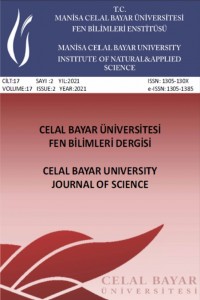Abstract
References
- 1. Stig, F, Hallström, S. 2012. Spatial modelling of 3D-woven textiles. Composite Structures; 94(5): 1495–1502.
- 2. Ko, F. 3-D textile reinforcements in composite materials. In: Miravete A (ed) 3-D textile reinforcements in composite materials. Woodhead Publishing, Cambridge, 1999, pp 9–42.
- 3. Mohanty, AK, Misra, M, Drzal, LT. Natural fibers, biopolymers, and biocomposites: An introduction. In: Mohanty A, Misra M, Drzal LT (eds) Natural fiber, biopolymer, and biocomposites. CRC Press, Boca Raton, 2005, pp 1–36.
- 4. Aziz, SH, Ansell, MP. Optimising the properties of green composites. In: Baillie C (ed) Green composites: Polymer composites and the environment. Woodhead Publishing, Boca Raton, 2004, pp 154–180.
- 5. Satyanarayana, KG, Arizaga, GGC, Wypych, F. 2009. Biodegradable composites based on lignocellulosic fibers–An overview. Progress in Polymer Science; 34(9): 982–1021.
- 6. Mohanty, AK, Misra, M, Hinrichsen, G. 2000. Biofibres, biodegradable polymers and biocomposites: An overview. Macromolecular Materials and Engineering; 276–277(1): 1–24.
- 7. Bismarck, A, Mishra, S, Lampke, T. Plant fibers as reinforcement for green composites. In: Mohanty A, Misra M, Drzal LT (eds) Natural fibers, biopolymers, and biocomposites. CRC Press, Boca Raton, 2005, pp 37-108.
- 8. Wambua, P, Ivens, J, Verpoest, I. 2003. Natural fibres: Can they replace glass in fibre reinforced plastics? Composites Science and Technology; 63(9): 1259–1264.
- 9. Joshi, SV, Drzal, LT, Mohanty, AK, Arora, S. 2004. Are natural fiber composites environmentally superior to glass fiber reinforced composites? Composites Part A: Applied Science and Manufacturing; 35(3): 371–376.
- 10. Mehta, G, Mohanty, AK, Thayer, K, Misra, M, Drzal, LT. 2005. Novel biocomposites sheet molding compounds for low cost housing panel applications. Journal of Polymers and the Environment; 13: 169–175.
- 11. Bledzki, AK, Faruk, O, Sperber, VE. Cars from bio-fibres. 2006. Macromolecular Materials and Engineering; 291(5): 449–457.
- 12. Bilisik, K, Karaduman, NS, Bilisik, NE, Bilisik, HE. 2013. Three-dimensional fully interlaced woven preforms for composites. Textile Research Journal; 83(19): 2060-2084.
- 13. Potluri, P, Sharif, T, Jetavat, D. 2008. Robotic approach to textile preforming for composites. Indian Journal of Fibre & Textile Research; 33: 333-338.
Abstract
Fiber-reinforced composite materials have many advantages in various engineering applications when compared to traditional materials such as glass, metals, ceramics and unreinforced plastics. Recently, textile-reinforced composites are increasingly used in various industries including aerospace, construction and automotive. This study aims to investigate the geometric characteristics of three-dimensional (3D) woven preforms which are used as reinforcement materials in composites. To this end, 3D woven preforms with three different weave types were produced namely 3D orthogonal, 3D plain z-orthogonal and 3D satin z-orthogonal. The effect of weave pattern and the number of layers on the geometric characteristics of the produced fabrics was investigated. For this purpose, yarn-yarn distances and density, yarn lengths and yarn angles were measured. The effect of the number of layers on the geometric parameters was limited. Yarn-to-yarn distances in plain-weave fabrics were found to be greater when compared to other types of fabrics whereas the yarn density decreased in plain woven fabrics due to a large number of interlacements. This shows that in composite form, the fiber volume fraction in the filling and z-directions will be lower in the semi-interlaced fabrics when compared to the non-interlaced orthogonal structures. It was also shown that filling and warp angles are a function of weave type while z yarn angle is associated with the weaving operations such as beat-up, multi-layer filling insertion and warp yarn let off.
Keywords
Geometric characterization Jute fiber Natural fiber composites Three dimensional (3D) woven preform
References
- 1. Stig, F, Hallström, S. 2012. Spatial modelling of 3D-woven textiles. Composite Structures; 94(5): 1495–1502.
- 2. Ko, F. 3-D textile reinforcements in composite materials. In: Miravete A (ed) 3-D textile reinforcements in composite materials. Woodhead Publishing, Cambridge, 1999, pp 9–42.
- 3. Mohanty, AK, Misra, M, Drzal, LT. Natural fibers, biopolymers, and biocomposites: An introduction. In: Mohanty A, Misra M, Drzal LT (eds) Natural fiber, biopolymer, and biocomposites. CRC Press, Boca Raton, 2005, pp 1–36.
- 4. Aziz, SH, Ansell, MP. Optimising the properties of green composites. In: Baillie C (ed) Green composites: Polymer composites and the environment. Woodhead Publishing, Boca Raton, 2004, pp 154–180.
- 5. Satyanarayana, KG, Arizaga, GGC, Wypych, F. 2009. Biodegradable composites based on lignocellulosic fibers–An overview. Progress in Polymer Science; 34(9): 982–1021.
- 6. Mohanty, AK, Misra, M, Hinrichsen, G. 2000. Biofibres, biodegradable polymers and biocomposites: An overview. Macromolecular Materials and Engineering; 276–277(1): 1–24.
- 7. Bismarck, A, Mishra, S, Lampke, T. Plant fibers as reinforcement for green composites. In: Mohanty A, Misra M, Drzal LT (eds) Natural fibers, biopolymers, and biocomposites. CRC Press, Boca Raton, 2005, pp 37-108.
- 8. Wambua, P, Ivens, J, Verpoest, I. 2003. Natural fibres: Can they replace glass in fibre reinforced plastics? Composites Science and Technology; 63(9): 1259–1264.
- 9. Joshi, SV, Drzal, LT, Mohanty, AK, Arora, S. 2004. Are natural fiber composites environmentally superior to glass fiber reinforced composites? Composites Part A: Applied Science and Manufacturing; 35(3): 371–376.
- 10. Mehta, G, Mohanty, AK, Thayer, K, Misra, M, Drzal, LT. 2005. Novel biocomposites sheet molding compounds for low cost housing panel applications. Journal of Polymers and the Environment; 13: 169–175.
- 11. Bledzki, AK, Faruk, O, Sperber, VE. Cars from bio-fibres. 2006. Macromolecular Materials and Engineering; 291(5): 449–457.
- 12. Bilisik, K, Karaduman, NS, Bilisik, NE, Bilisik, HE. 2013. Three-dimensional fully interlaced woven preforms for composites. Textile Research Journal; 83(19): 2060-2084.
- 13. Potluri, P, Sharif, T, Jetavat, D. 2008. Robotic approach to textile preforming for composites. Indian Journal of Fibre & Textile Research; 33: 333-338.
Details
| Primary Language | English |
|---|---|
| Subjects | Engineering |
| Journal Section | Articles |
| Authors | |
| Publication Date | June 28, 2021 |
| Published in Issue | Year 2021 Volume: 17 Issue: 2 |


